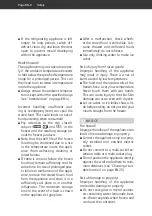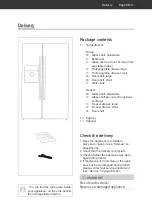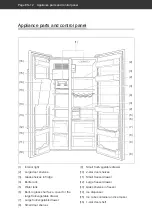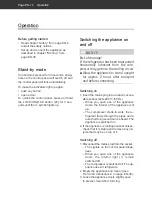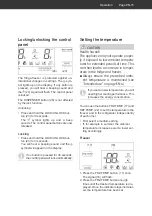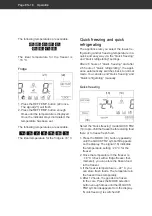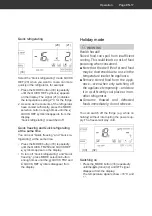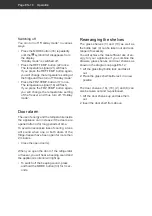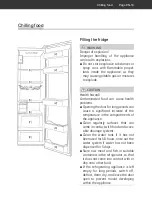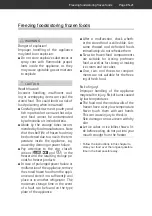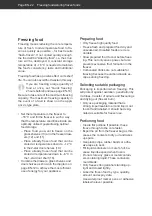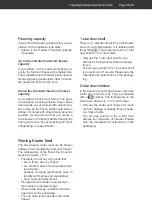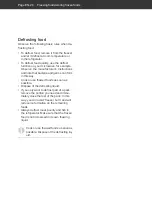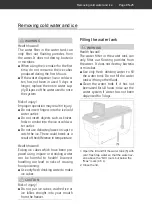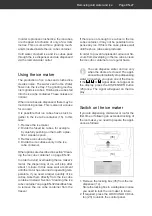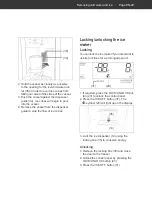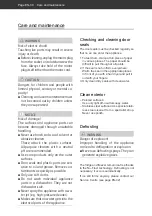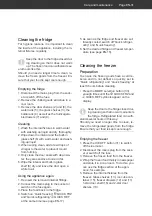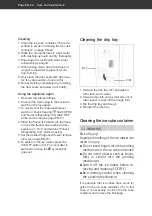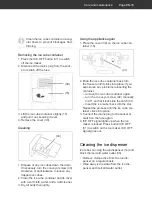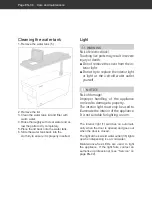
Freezing foods/storing frozen foods
Page EN-22
Freezing food
Freezing means reducing the core tempera-
ture of fresh, room-temperature food to fro-
zen as quickly as possible – for best results
“flash-frozen”. If not cooled quickly enough,
the food will be “killed by frost”, i.e. the struc-
ture will be destroyed. A constant storage
temperature of –18 °C is needed to maintain
the food’s consistency, taste and nutritional
value.
Freezing food has a positive effect on its shelf
life. You can also avoid food waste in this way.
If you are freezing a large quantity of
food at once, set “Quick freezing”
2 hours beforehand (see page EN-16).
Be sure to take note of the maximum freezing
capacity. The maximum freezing capacity in
the event of a fault is shown on the appli-
ance’s type plate.
• Set the temperature in the freezer to
–18 °C and fill the freezer in such a way
that the temperature conditions inside are
optimally utilised, guaranteeing optimal
food storage:
– Place food you want to freeze on the
glass shelves (13) or in the freezer draw-
ers (12) and (11).
– Place already frozen food that can be
stored at temperatures down to –12 °C
in the 2-star door shelves (10).
– Place already frozen food that can be
stored at temperatures down to –6 °C in
the 1-star door shelf (16).
• Combine the drawers, glass shelves and
door shelves as shown in the diagram on
page EN-12 to achieve the most efficient
use of energy for your appliance.
Preparing food
• Only freeze high quality food.
• Freeze fresh and prepared food dry and
unseasoned. Unsalted foods are more
durable.
• Allow prepared food to cool before freez-
ing. This not only saves power, but also
prevents excessive frost formation in the
freezer.
• Carbonated drinks are not suitable for
freezing because the carbon dioxide es-
capes during freezing.
Selecting suitable packaging
Packaging is important when freezing. This
will protect against oxidation, penetration by
microbes, transfer of odours and flavourings
and drying out (freezer burn).
• Only use packaging material that is
strong, impermeable to air and liquid, not
too stiff and labelled. It should be desig-
nated as suitable for freezer use.
Portioning food
• Create flat portions if possible; these
freeze through to the core faster.
• Expel the air from the freezer bag as this
causes the contents to dry out and takes
up space.
• Use plastic clips, rubber bands or adhe-
sive tapes to seal.
• Fill liquid containers no more ¾ full, be-
cause liquids expand when frozen.
• Do not store any glass or metal contain-
ers containing liquid. These containers
could break.
• Only freeze strong alcohol standing up-
right and closed tightly.
• Label the frozen food by type, quantity,
amount and expiry date.
Use waterproof marker pens or adhesive
labels wherever possible.

